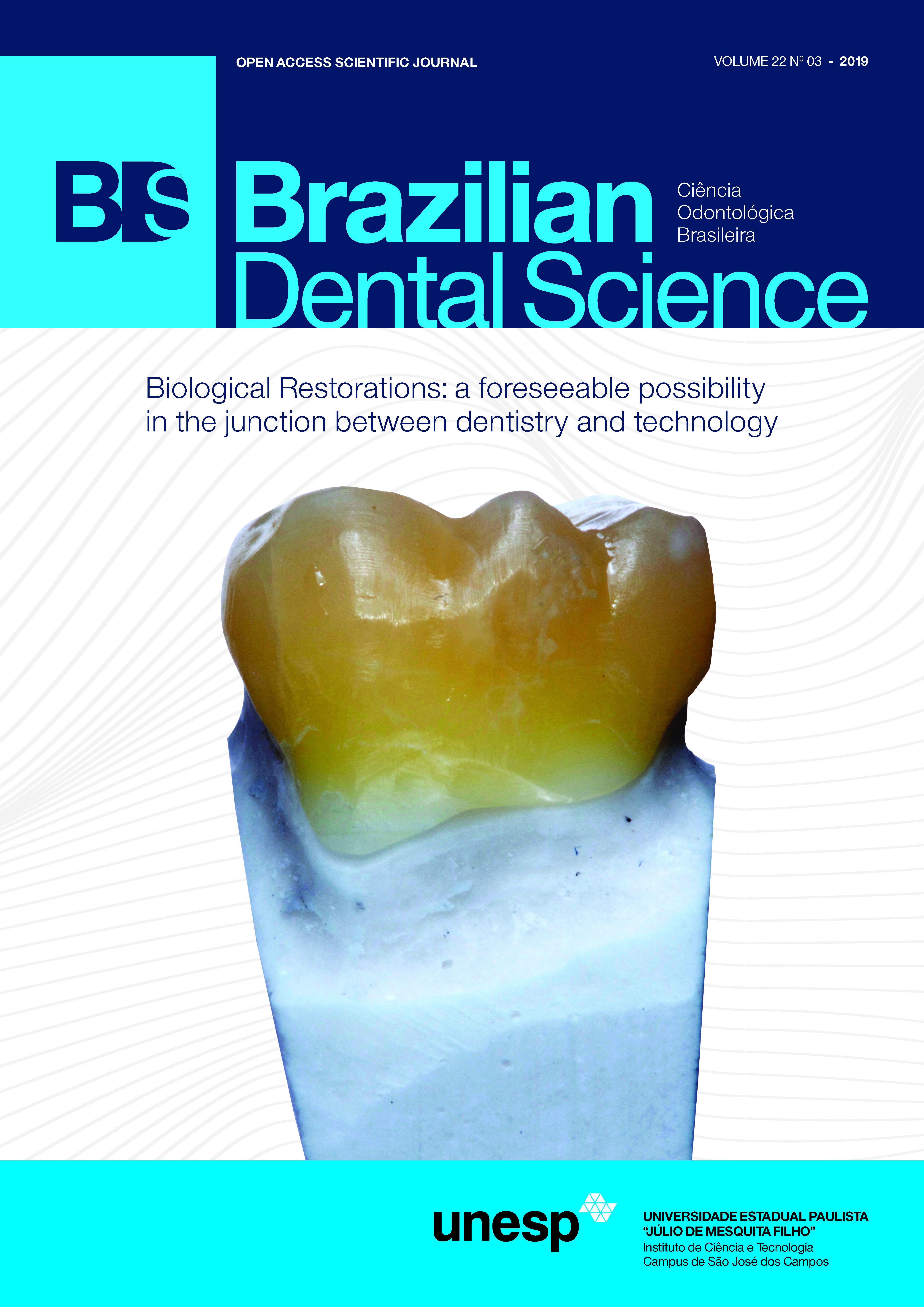Masticatory force and electromyographic activity of the mandibular elevators muscles in different rehabilitation treatments.
DOI:
https://doi.org/10.14295/bds.2019.v22i3.1759Resumo
The masticatory function is one of the most complex neuropsychological mechanisms in human motor performance and it depends on several factors, such as bite force, muscle coordination, morphology, and number of teeth in occlusion. Purpose: to evaluate the influence of different rehabilitation treatments such as complete and partial dentures, masticatory forces, and the dynamics of mandibular elevator muscles. Material and Methods: the maximum bite force (force transducer) and electrical activity (superficial electromyography) associated with the masseter and temporal muscles were quantified. These factors were evaluated at rest position and isometric contraction. The data were subjected to descriptive statistics and compared based on the experimental groups, through ANOVA and Tukey’s tests. Results: for bite force, the ANOVA test showed statistical difference between groups and Tukey’s test showed that the force measured in the removable partial dentures group was 44.75% lower than that of the control group, while for complete denture wearers, there was a reduction of 74.4% in bite force in relation to the control group. For electromyographic activity, there was no statistical difference between groups. Pearson’s correlation test (?=5%) showed positive correlation between the variables of bite force and electromyographic activity only for the control group. Conclusion: it was concluded that the loss of dental elements and their replacement with either partial or complete dentures has a great influence on bite force and electromyographic activity of the masseter and temporal muscles.
Downloads
Downloads
Arquivos adicionais
Publicado
Como Citar
Edição
Seção
Licença
TRANSFERÊNCIA DE DIREITOS AUTORAIS E DECLARAÇÃO DE RESPONSABILIDADE
Toda a propriedade de direitos autorais do artigo "____________________________________________________________________" é transferido do autor(es) para a CIÊNCIA ODONTOLÓGICA BRASILEIRA, no caso do trabalho ser publicado. O artigo não foi publicado em outro lugar e não foi submetido simultaneamente para publicação em outra revista.
Vimos por meio deste, atestar que trabalho é original e não apresenta dados manipulados, fraude ou plágio. Fizemos contribuição científica significativa para o estudo e estamos cientes dos dados apresentados e de acordo com a versão final do artigo. Assumimos total responsabilidade pelos aspectos éticos do estudo.
Este texto deve ser impresso e assinado por todos os autores. A versão digitalizada deverá ser apresentada como arquivo suplementar durante o processo de submissão.




























